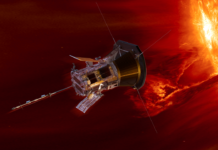A Comprehensive Review of Ingenuity Mars Helicopter’s Final Flight
In a groundbreaking chapter of aerospace engineering, NASA’s Ingenuity Mars Helicopter, the first aircraft to take flight on another planet, concluded its mission after nearly three years of operations. This article delves into the details of Ingenuity’s final flight, explores the implications for future Mars missions, and highlights the innovations that this mission introduced to planetary exploration.
In early 2024, engineers from NASA’s Jet Propulsion Laboratory (JPL) in Southern California, in partnership with AeroVironment, began an extensive analysis of Ingenuity’s last flight, which took place on January 18, 2024. This detailed review is set to be published as a NASA technical report in the coming weeks. Originally conceived as a technology demonstration, Ingenuity was designed to carry out up to five test flights over a 30-day period. However, the helicopter exceeded all expectations, completing 72 flights and covering more than 30 times the intended distance, while accumulating over two hours of flight time.
The Final Flight: An Unanticipated Conclusion
The analysis suggests that the failure of Ingenuity’s navigation system to deliver precise data during its final flight likely triggered a series of events that ultimately ended its mission. The insights gleaned from this investigation are expected to benefit not only future Mars helicopters but also other aircraft intended for operation on extraterrestrial surfaces.
The 72nd flight, referred to as "Flight 72," was designed as a short vertical hop to evaluate Ingenuity’s flight capabilities and capture images of the surrounding area. During the flight, Ingenuity ascended to a height of 40 feet (12 meters), hovered, and took pictures. By 19 seconds, the helicopter began its descent, and by 32 seconds, it was back on the Martian surface with communications halted. The following day, contact was reestablished, and images received six days post-flight indicated significant damage to Ingenuity’s rotor blades.
Without the luxury of black boxes or direct eyewitness accounts, the engineers relied on data to piece together the most probable cause of the incident. Håvard Grip, Ingenuity’s first pilot at JPL, remarked, “When conducting an accident investigation from 100 million miles away, you don’t have any black boxes or eyewitnesses. While multiple scenarios are viable with the available data, we have one we believe is most likely: Lack of surface texture gave the navigation system too little information to work with.”
Understanding Ingenuity’s Navigation Challenges
Ingenuity’s vision navigation system was developed to track visual landmarks on the Martian surface using a downward-facing camera, which worked well on pebbly, flat terrain. This approach was sufficient for the helicopter’s initial flights. However, by the 72nd flight, Ingenuity was in a region of Jezero Crater characterized by steep, relatively featureless sand ripples.
A primary requirement of the navigation system was to provide velocity estimates that would allow the helicopter to land safely. Data from Flight 72 indicated that approximately 20 seconds after takeoff, the navigation system struggled to identify enough surface features to track. Photographs taken post-flight revealed that navigation errors resulted in high horizontal velocities upon landing. The most plausible scenario suggests that the hard impact on a sand ripple caused Ingenuity to pitch and roll, subjecting the rotor blades to forces beyond their design limits and causing them to break.
The dislodged blades led to excessive vibrations within the rotor system, which in turn generated a high power demand that disrupted communications with the helicopter.
Looking Ahead: Lessons from Ingenuity
Despite the unfortunate end to Flight 72, Ingenuity continues to transmit weather and avionics test data to the Perseverance rover roughly once a week. The weather data is valuable for future Martian explorers, while the avionics data is already aiding engineers in designing future aircraft for Mars.
Ingenuity’s project manager, Teddy Tzanetos, noted, “Because Ingenuity was designed to be affordable while demanding huge amounts of computer power, we became the first mission to fly commercial off-the-shelf cellphone processors in deep space. We’re now approaching four years of continuous operations, suggesting that not everything needs to be bigger, heavier, and radiation-hardened to work in the harsh Martian environment.”
Inspired by the helicopter’s longevity, NASA engineers are exploring smaller, lighter avionics for future Mars missions, particularly the Mars Sample Return campaign. The data is also informing research into potential designs and capabilities for future Mars helicopters.
Mars Chopper: The Next Evolution
During a briefing at the American Geophysical Union’s annual meeting in Washington, Tzanetos shared insights into the Mars Chopper, a conceptual rotorcraft being studied by Ingenuity alumni. The proposed Mars Chopper would be approximately 20 times heavier than Ingenuity and could transport several pounds of scientific equipment. It is envisioned to autonomously explore remote Martian locations, covering distances of up to 2 miles (3 kilometers) in a single day, significantly surpassing Ingenuity’s longest flight of 2,310 feet (704 meters).
“Ingenuity has given us the confidence and data to envision the future of flight at Mars,” Tzanetos stated.
Collaborative Efforts in Advanced Aerospace Engineering
The construction and management of the Ingenuity Mars Helicopter were spearheaded by JPL, with support from NASA’s Science Mission Directorate. Significant flight performance analysis and technical assistance were provided by NASA’s Ames Research Center in California’s Silicon Valley and NASA’s Langley Research Center in Virginia. Key design assistance and vehicle components were supplied by AeroVironment, Qualcomm, and SolAero, while Lockheed Space was responsible for designing and manufacturing the Mars Helicopter Delivery System.
The executive overseeing the Ingenuity Mars helicopter program at NASA Headquarters is Dave Lavery.
For further details, you can visit the official NASA page dedicated to the Ingenuity Helicopter: NASA Ingenuity Helicopter.
This comprehensive review of Ingenuity’s mission underscores the remarkable achievements of this technology demonstration and its pivotal role in shaping the future of planetary exploration. As NASA and its partners continue to innovate and learn from Ingenuity’s experiences, the potential for exploration and scientific discovery on Mars and beyond grows immensely.
For more Information, Refer to this article.


































